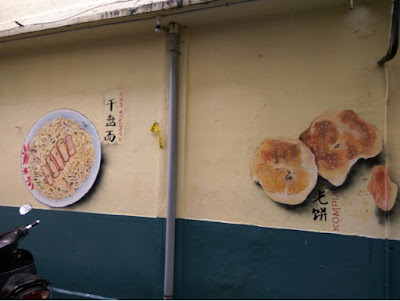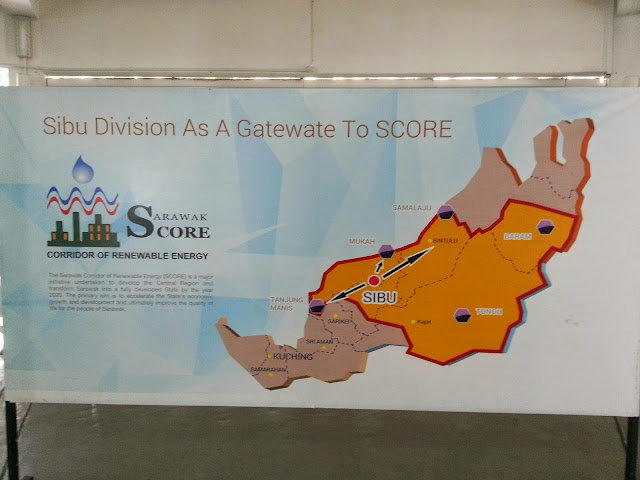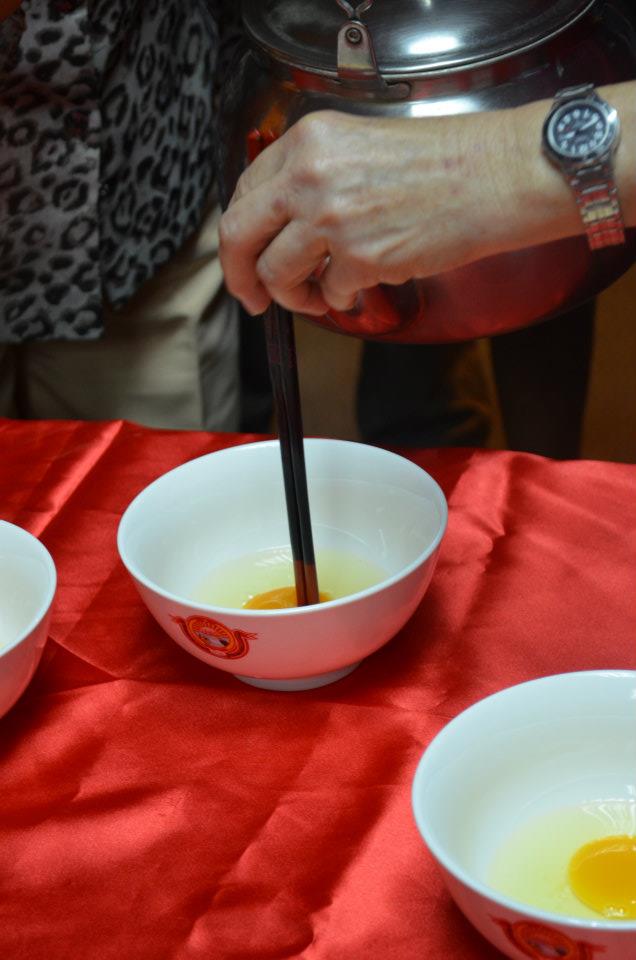Sibu Municipal Council (SMC) initiated a street art project in May this year, undertaken by the council’s Sibu Street Art Gallery Committee in preparation for ‘Visit Sibu Year 2017’.
Location: Alley besides Ah Hee Kopitiam, Butterfly Garden
This can be found near the famous Chop Hing Huong, 兴园茶室 Ding Bian Hu 鼎边糊. The painying showing how the owner cooks the delicious Ding Bian Hu.
Location: Back Lane of Market Road
There are few paintings (6 in total) that adorns the wall along the Back Lane of Market Road. It shows the famous and most liked local delight of people in Sibu.
Kampua - foochow dry noodles. Traditionally it is white in colour. You can order it with Soy Sauce(Black) or Chili Sauce(Red) or Soy Sauce with chili Sauce.
Kompia - a type of foochow traditional bread cooked over hot burning charcoal.
Penyeram - a Malay sweet cake.
Kuih Jala - Melanau and Iban net cake.
This painting shows one of the favourite local Malayt snacks, the ‘Pulut Panggang’ that consists of glutinous rice soaked in coconut milk and steamed before it is rolled in banana leaves and then grilled. There are lot of variety of Pulut Panggang - Kosong(No filling, only glutinous rice), Daging(fill with beef), Ayam(fill with chicken), Ikan Bilis(fill with anchovies) etc.
Dian Bian Ngu - a thick soup made of cooked rice paste served with squib, meatballs, black mushroom and golden needles.
Location: Khoo Peng Loong Road, near the Sibu Wharf
This painting of a Wharf Coolie adorns the wall outside the very old food court at Khoo Peng Loong Road.

Ayam Bungkus - chicken tied and wrapped up with newspaper and nylon string. I used to think that everywhere the chicken is wrapped like this but find that this is unique to Sibu.
Childhood - a painting of children playing traditional games in the central market - Level 1, near the eatery stall 124.
Location: Sarawak House
Iron Man painting at Sarawak House.
Location: Good Happiness Restaurant旺喜楼, Lorong Sena 5
One Piece Painting behind the Good Happiness Restaurant旺喜楼. This is so cute.
Location: Blacksmith Road
Green-and-white bus wall painting at Blacksmith Road - our traditional non-airconditioned bus.




































.jpg)
.jpg)
.jpg)
.jpg)









